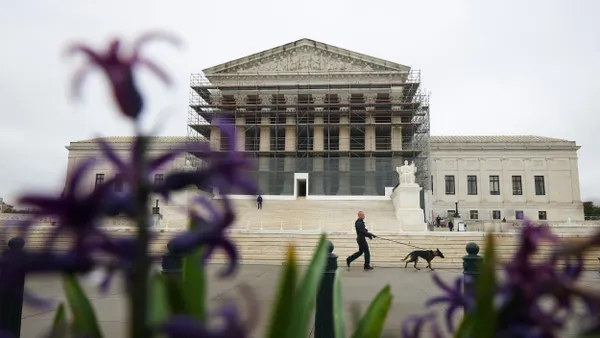Dive Brief:
- Increasing teacher pension costs have driven a third of school districts to cut or defer their spending over the last five years, according to a recently published survey of 1,000 district leaders by nonprofit Equable Institute.
- District leaders reported that initiatives for supporting, recruiting and compensating teachers were the most likely to face the chopping block as a result of growing pension costs — regardless of whether a district was in a state that directly funded pension costs or had to cover pension costs itself. Other areas affected included utilities, maintenance and security, as well as district savings funds.
- This results in “hidden” funding cuts for districts, as pension costs surged 220% since 2001 while K-12 budgets have only seen a 33% increase, Equable Institute said.
Dive Insight:
Districts accumulated $600 billion in teacher pension debt between 2001 and 2024 as employer contribution requirements for teacher pension plans tripled from 9.3% to 31.7% of payroll, according to Equable Institute, a nonprofit that addresses public sector pension funding challenges.
Most district spending for teacher pensions also often goes toward debt.
For instance, districts spent $63 billion on teacher pension plans in 2020 — of which $45 billion was used to service pension debt, and the remaining $18 billion went toward benefits for current employees, according to an analysis by the Education Commission of the States.
Districts shouldn’t have to fully cover pension debt costs, the Equable Institute argued, particularly because high-poverty districts are more likely to incur those costs and struggle more than wealthier districts to raise revenue.
Alternatively, when the state covers overall pension costs, it can help distribute pension funds equitably, the nonprofit's report said. But if that subsidy is not accounted for in a state’s school funding formula, wealthier districts can be disproportionately favored.
Large school districts were almost twice as likely as smaller ones to slash or defer spending to service pension debt, Equable Institute found.
“There are at least one-third of school districts nationally adjusting their budgets explicitly because of growing pension debt costs — and there are plenty more who likely don’t even realize some of their budget pressure is coming from increasing pension contribution requirements,” said Anthony Randazzo, the group's executive director, in a June 11 statement.
To navigate what it calls the hidden budget impacts of teacher pension cost, Equable Institute recommends that states:
- Review the portion of K-12 state and local resources impacted by retirement costs. When pension costs go up, implement policies that proportionally increase K-12 funding.
- Avoid making districts pay teacher pension debt so that other K-12 services are not negatively impacted.
- Require districts to cover some part of “normal” retirement costs through their salary negotiations and decisions.
- Assess localities’ ability to cover pension costs when reviewing state education funding.
- Specifically include retirement costs in states’ school funding formulas.
Equable Institute’s survey was conducted in February 2024 in partnership with the EdWeek Research Center.







 Dive Awards
Dive Awards






